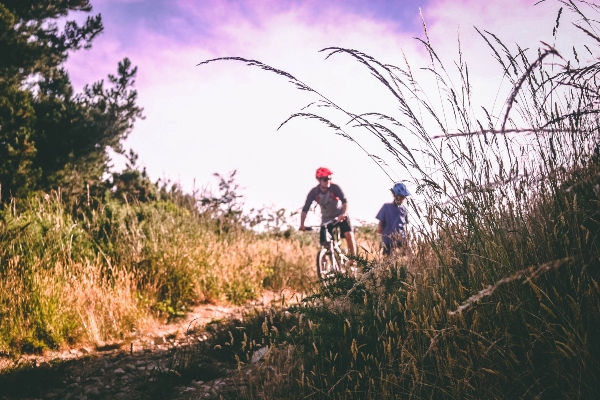Avoid risks but still get the rush!
Ask anyone who rides, and he or she will tell you that cycling is an addictive sport. Mountain biking in particular offers adrenaline junkies a rush with the challenge of navigating difficult terrain and making split-second decisions. As with any sport, there are risks for injury involved in mountain biking, regardless of skill level. For the novice, however, the risks may be greater because of inexperience, overconfidence, improper bike fit and more.
Dr. Marque Allen, a podiatrist with Sports Medicine Association of San Antonio, says that besides contusions associated with falls, the most common bike injuries are broken wrists, ankles and collarbones.
“A fractured collarbone is almost a rite of passage in mountain biking,” he chuckles. He should know — this 2004 state mountain bike champion has broken his collarbone not once but twice.
How can you avoid cuts, scrapes, broken bones and concussions while biking off-road?
One of the first ways is to understand that a mountain bike is nothing like the 10-speed you had as a kid.
For starters, mountain bikes are equipped with many different gears that allow you to keep the resistance easy and consistent if you know how to use them properly. Another difference is that, in addition to back brakes, mountain bikes sport front brakes as well, and those can cause all sorts of problems for the novice rider.
“Front brakes are a big nemesis,” says Dr. Allen. “Braking is an art,” he continues. “It should be a gradual descent. If you slam on the brakes, you will go over the top, and that’s when you get a fractured collarbone.”
The fit of the bike may be the most important part of riding.
The staff at a good bike shop should measure you for proper seat height and proper distance between the seat and handlebars. Your body weight should be evenly distributed between the handlebars, seat and pedals for optimum comfort and longer rides.
Dr. Allen recommends that begin-ners avoid purchasing the clip-in pedals most avid cyclists use until they become confident on the bike. Although they allow for a more effective pedal stroke, clip-on pedals can be difficult to get out of during a fall, and that can result in broken feet and ankles. When you do transition to the clip-on, keep the fit loose until you become accustomed to the feel of it.
Finally, know your skill level, and then ride on a trail compatible with that level. If you are unsure, walk the trail first or ride with someone who is familiar with the terrain. And, of course, always wear a helmet.
Following these guidelines will make it easy for bikers of every skill level to enjoy all that this sport has to offer. With a little common sense, it can be as easy as riding a bike!






